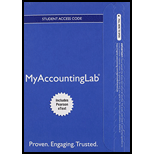
Concept Introduction:
Classes of shares:
• Shares provide partial ownership or a “share” of a corporation. There are two primary classes of shares – Equity Shares and Preference Shares.
• Equity shares are the class of shares which carry voting rights and equity share holders are the true owners of the company as in the event of dissolution, equity shareholders get last preference in clearing the amounts invested and there is no guarantee of profits / dividend on an annual basis.
• Preference shares are the class of shares which do not carry voting rights and in the event of dissolution, preference shareholders get first preference in clearing the amounts invested and there is usually guarantee of profits / dividend on an annual basis.Convertible Preference shares are preference shares that carry the option to be converted into equity shares after certain duration.
Requirement 1
Classes of shares those are outstanding
2)
Introduction:
Calculation of Par value of Shares
• Shares provide partial ownership or a “share” of a corporation. There are two primary classes of shares – Equity Shares and Preference Shares.
• Preference shares are the class of shares which do not carry voting rights and in the event of dissolution, preference shareholders get first preference in clearing the amounts invested and there is usually guarantee of profits / dividend on an annual basis.Convertible Preference shares are preference shares that carry the option to be converted into equity shares after certain duration..
• Par value of shares refers to the face value or book value of the shares issued. The difference between issue price and par value is the discount or premium on shares.
To Calculate:
Par Value of
3)
Introduction:
- Journal entries are the first step in recording financial transactions and preparation of financial statements.
- These represent the impact of the financial transaction and demonstrate the effect on the accounts impacted in the form of debits and credits.
- Assets and expenses have debit balances and Liabilities and Incomes have credit balances and according to the business transaction, the accounts are appropriately debited will be credited by credited to reflect the effect of business transactions and events.
To Prepare:
Summary Journal entries to record issuance of all stock.
4)
Introduction:
Journal Entries
- Journal entries are the first step in recording financial transactions and preparation of financial statements.
- These represent the impact of the financial transaction and demonstrate the effect on the accounts impacted in the form of debits and credits.
- Assets and expenses have debit balances and Liabilities and Incomes have credit balances and according to the business transaction, the accounts are appropriately debited will be credited by credited to reflect the effect of business transactions and events.
To Prepare:
Journal Entries for Issuance and payment of Dividend
Want to see the full answer?
Check out a sample textbook solution
Chapter 13 Solutions
MyLab Accounting with Pearson eText -- Access Card -- for Horngren's Accounting, The Financial Chapters (My Accounting Lab)
- On April 1, 2016, a company issued $500,000 maturity value, 10% bonds for $500,000 cash. The bonds are dated January 1, 2016, and mature on January 1, 2026. Interest is paid semiannually on June 30 and December 31. What amount of accrued interest payable should be reported in the September 30, 2016, balance sheet?arrow_forwardVerma Inc.'s total assets at the beginning of the year amount to $500,000,000, and its total assets at the end of the year amount to $250,000,000. If its return on assets for the year is 28%, what is Verma's net income for the year? Helparrow_forwardAccountingarrow_forward
- General Account tutor please find solutionarrow_forward???!!arrow_forwardOn July 1, 2021, Orion Tech received $75,000 through promissory notes maturing in 2024. These notes pay 5% interest annually, and Orion's fiscal year ends on December 31. What amount of interest expense should Orion recognize by the end of the year?arrow_forward

 AccountingAccountingISBN:9781337272094Author:WARREN, Carl S., Reeve, James M., Duchac, Jonathan E.Publisher:Cengage Learning,
AccountingAccountingISBN:9781337272094Author:WARREN, Carl S., Reeve, James M., Duchac, Jonathan E.Publisher:Cengage Learning, Accounting Information SystemsAccountingISBN:9781337619202Author:Hall, James A.Publisher:Cengage Learning,
Accounting Information SystemsAccountingISBN:9781337619202Author:Hall, James A.Publisher:Cengage Learning, Horngren's Cost Accounting: A Managerial Emphasis...AccountingISBN:9780134475585Author:Srikant M. Datar, Madhav V. RajanPublisher:PEARSON
Horngren's Cost Accounting: A Managerial Emphasis...AccountingISBN:9780134475585Author:Srikant M. Datar, Madhav V. RajanPublisher:PEARSON Intermediate AccountingAccountingISBN:9781259722660Author:J. David Spiceland, Mark W. Nelson, Wayne M ThomasPublisher:McGraw-Hill Education
Intermediate AccountingAccountingISBN:9781259722660Author:J. David Spiceland, Mark W. Nelson, Wayne M ThomasPublisher:McGraw-Hill Education Financial and Managerial AccountingAccountingISBN:9781259726705Author:John J Wild, Ken W. Shaw, Barbara Chiappetta Fundamental Accounting PrinciplesPublisher:McGraw-Hill Education
Financial and Managerial AccountingAccountingISBN:9781259726705Author:John J Wild, Ken W. Shaw, Barbara Chiappetta Fundamental Accounting PrinciplesPublisher:McGraw-Hill Education





